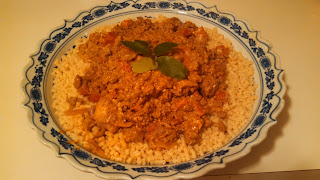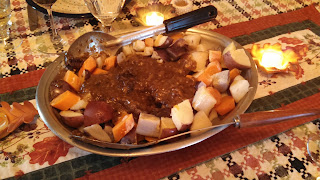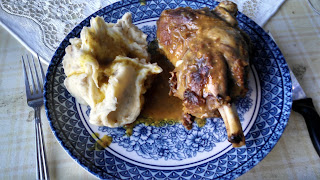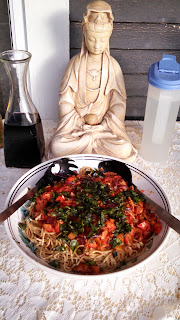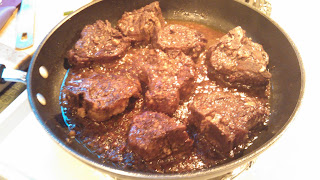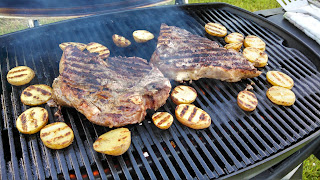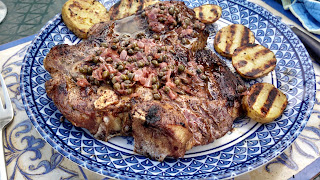This is a recipe that I obtained from an old cookbook I found at the bottom of some desk drawer somewhere. The cookbook, an old softcover, was published by the Rival Manufacturing Company in 1982. The “Rival” brand name is still around and they manufacture small kitchen appliances. Whether they still published the cookbook, Time to Enjoy: A Quick and Creative Recipe Collection, I do not know.
The recipe intrigued me simply because I enjoy kebob (kebab) cooking. That is, broiling or grilling meat and/or veggie on a skewer. The recipe is termed “Polynesian.” I gather because it has pineapple chunks. Somehow, somewhere along the line, adding pineapple to a dish made it Hawaiian or Polynesian. Just as adding soy sauce to a dish makes it “Asian.”
This is a very easy to prepare recipe that calls for Italian salad dressing, the type found in any store or supermarket. If you’re loath to use a processed product that comes in a can or jar, you can make your own. Here’s a quicky method: combine in a salad cruet or quart mason jar with a tight fitting lid, 3/4 cup olive oil; 1/4 cup red wine vinegar; 1 finely minced garlic clove or 1/2 teaspoon garlic powder; 1 tablespoon fresh oregano or 1 teaspoon dried; 1/4 cup fresh chopped parsley or 1 tablespoon dried. If desired, you can add 2 tablespoons grated Parmesan cheese, but this is optional. Some like, some don’t. Shake well, and serve. It renders about 1 cup of salad dressing.
Note that in this recipe, I served the kebobs with couscous. But you can serve it over rice or any other grain.
POLYNESIAN KEBOBS
1 pound beef sirloin, cut in 1-inch cubes
1/4 cup Italian dressing
1 can (8 ounces) pineapple chunks
1 tablespoon brown sugar
1 tablespoon soy sauce
1 teaspoon cornstarch
1 zucchini, cut in bite-size chunks
1. In bowl, combine sirloin cubes and salad dressing. Allow to stand a few minutes.
2. Drain pineapple chunks, reserving liquid. In small saucepan, combine liquid, brown sugar, soy sauce and cornstarch; heat until boiling and thickened.
3. On skewers, alternate beef, pineapple and zucchini. Brush with remaining salad dressing marinade.
4. Broil 10 minutes or until beef is cooked, turning skewers half-way through cooking. Serve with sauce.
Yield: 4 servings.
